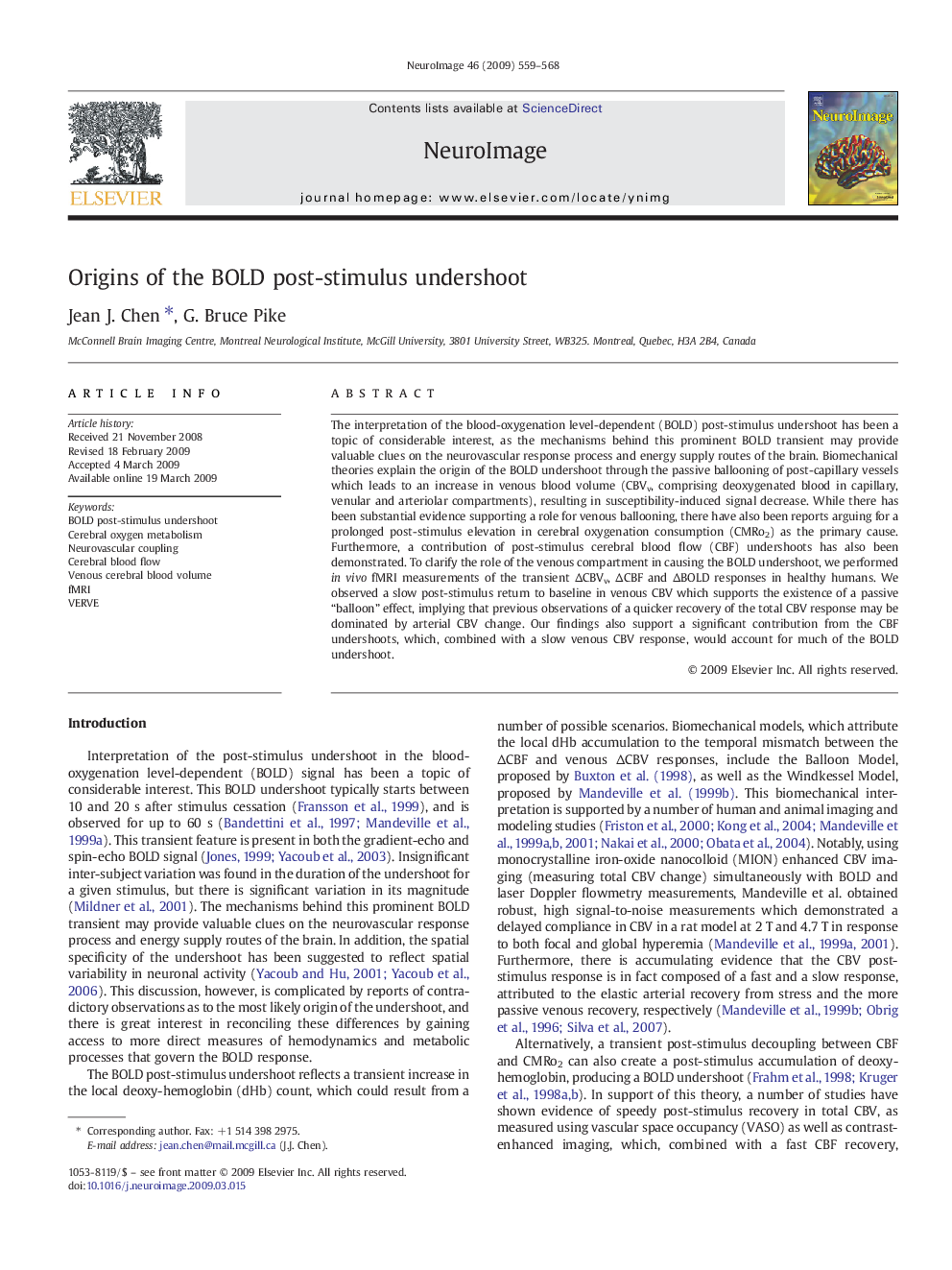| کد مقاله | کد نشریه | سال انتشار | مقاله انگلیسی | نسخه تمام متن |
|---|---|---|---|---|
| 6037839 | 1188790 | 2009 | 10 صفحه PDF | دانلود رایگان |

The interpretation of the blood-oxygenation level-dependent (BOLD) post-stimulus undershoot has been a topic of considerable interest, as the mechanisms behind this prominent BOLD transient may provide valuable clues on the neurovascular response process and energy supply routes of the brain. Biomechanical theories explain the origin of the BOLD undershoot through the passive ballooning of post-capillary vessels which leads to an increase in venous blood volume (CBVv, comprising deoxygenated blood in capillary, venular and arteriolar compartments), resulting in susceptibility-induced signal decrease. While there has been substantial evidence supporting a role for venous ballooning, there have also been reports arguing for a prolonged post-stimulus elevation in cerebral oxygenation consumption (CMRo2) as the primary cause. Furthermore, a contribution of post-stimulus cerebral blood flow (CBF) undershoots has also been demonstrated. To clarify the role of the venous compartment in causing the BOLD undershoot, we performed in vivo fMRI measurements of the transient ÎCBVv, ÎCBF and ÎBOLD responses in healthy humans. We observed a slow post-stimulus return to baseline in venous CBV which supports the existence of a passive “balloon” effect, implying that previous observations of a quicker recovery of the total CBV response may be dominated by arterial CBV change. Our findings also support a significant contribution from the CBF undershoots, which, combined with a slow venous CBV response, would account for much of the BOLD undershoot.
Journal: NeuroImage - Volume 46, Issue 3, 1 July 2009, Pages 559-568